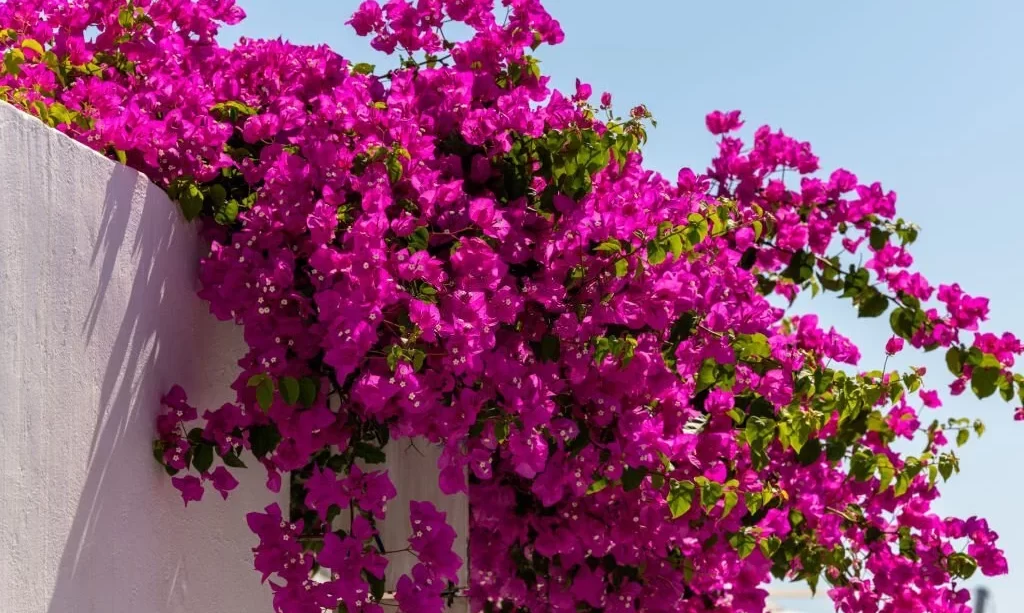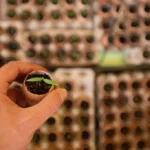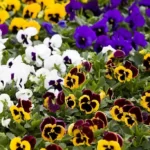Bougainvillea, with its dazzling display of vibrant and papery bracts, is a botanical spectacle that has captured the hearts of garden enthusiasts around the world. This ornamental vine, known for its cascading beauty, is a popular choice for adding a burst of color to gardens, patios, and landscapes. However, coaxing bougainvillea to bloom profusely and consistently can sometimes be a bit of a gardening challenge. In this article, we embark on a journey to unlock the secrets of bougainvillea blooming. We’ll explore the factors and techniques that can encourage this magnificent plant to burst into a riot of color, transforming your outdoor space into a tropical paradise.
- Formulated specifically for bougainvillea
- Easy to apply granular, no mixing, once-a-month application
- Dramatically increases blooms
- Created and used by BGI – the largest bougainvillea nursery in the country
- 5% Iron content is the key to beautiful bougainvillea
Bougainvillea
Before we delve into the art of making bougainvillea bloom, it’s essential to acquaint ourselves with the plant:
Bougainvillea (genus Bougainvillea) is a diverse group of flowering vines and shrubs known for their breathtaking and showy bracts. The true flowers of bougainvillea are small and inconspicuous, but they are surrounded by brightly colored bracts that can be pink, red, purple, magenta, or even orange. These bracts are what create the striking visual impact that bougainvillea is famous for.
Bougainvillea plants are native to South America, particularly Brazil, and they have made their way into gardens and landscapes worldwide. They are well-suited for warm and tropical climates and thrive in areas with plenty of sunlight.
Choose the Right Location
The first step in encouraging your bougainvillea to bloom is to choose the right location for planting:
- Full Sunlight: Bougainvillea is a sun-loving plant. It flourishes in areas that receive at least 6-8 hours of direct sunlight daily. Select a spot in your garden or on your patio where the plant will bask in the sunshine.
- Shelter from Harsh Conditions: While bougainvillea loves sunlight, it’s important to provide some protection from harsh winds and extremely cold temperatures. Planting near a windbreak, wall, or fence can help shield the plant from strong winds.
Choosing the right location sets the stage for bougainvillea to thrive and is the first step toward encouraging those magnificent blooms. In the upcoming sections, we’ll explore additional factors and techniques that will help you make your bougainvillea burst with color.
Soil and Fertilization
To encourage bougainvillea to bloom, it’s crucial to provide the right soil conditions and proper nourishment:
- Well-Draining Soil: Bougainvillea thrives in well-draining soil. Soil that retains too much water can lead to root rot and hinder blooming. Consider amending your soil with organic matter to improve drainage.
- Slightly Acidic pH: Bougainvillea prefers slightly acidic soil with a pH level between 5.5 and 6.0. You can test your soil’s pH and adjust it as needed with the addition of acidic amendments like peat moss or sulfur.
- Balanced Fertilizer: Fertilization plays a vital role in encouraging blooms. Use a balanced, slow-release fertilizer with micronutrients to provide the necessary nutrients without promoting excessive leafy growth. Fertilize bougainvillea during the growing season, typically in spring and summer, following package instructions.
Pruning and Training
Pruning and training techniques can significantly impact bougainvillea’s blooming habits:
- Regular Pruning: Pruning encourages branching and flowering. Trim back the tips of the branches regularly to encourage new growth. Be mindful of thorns, and use proper pruning tools and gloves.
- Training for Support: If you’re growing bougainvillea as a vine, provide support for it to climb. Training it along a trellis, fence, or arbor can help create a visually appealing display and encourage blooming.
- Remove Deadwood: Remove dead or diseased branches promptly. These can sap energy from the plant and hinder blooming.
- LOW MAINTENANCE: Our vine fertilizer is perfect for all homeowners! This slow release fertilizer only requires feeding every 14 days till blooming begins. Once blooming begins, you only need to feed your plants once a month.
- PACKED WITH NUTRIENTS: Our well developed bougainvillea plant food has a 17-7-10 formula promotes the development of healthy colorful blooms, while maintaining the health of your plants. With 4 sources of nitrogen and nutrients for maintaining plant health, this fertilizer allows for extended periods between feedings. This fertilizer works with soil biology to provide your vines with the best fertilizer and nutrition possible, at the right time.
- MAINTAIN YOUR PLANT’S HEALTH: Feel the benefits of a formula that was created to maintain your plants health. With added sulfur and gypsum, our formula helps create acidic soil to improve overall soil structure around the roots.
- FOR BOUGAINVILLEA VINES, BUT NOT LIMITED: This fertilizer was created for bougainvillea vines, but can also be applied to allamanda, coral vines, dipladenia, honeysuckles, jessamines, mandevilla, passion vines, queen anne’s lace, trumpet vines, and wisteria vines. This fertilizer comes in 4 sizes; 2lb, 4lb, 15lb, 25lb.
- EASY APPLICATION: Ditch the liquid fertilizer and enjoy all the benefits of a granular fertilizer. Our slow release granules help feed your plants for longer. Perfect for indoor and outdoor use, easily feed hanging, potted and grounded vines.
Watering and Moisture Control
Proper watering practices and moisture control are essential for bougainvillea’s health and blooming:
- Regular, Deep Watering: During the growing season, water your bougainvillea regularly but deeply. Water deeply enough to reach the root zone, but allow the soil surface to dry out between watering. Avoid shallow, frequent watering.
- Dormancy Period Reduction: In regions with mild winters, bougainvillea may continue to grow during the cooler months. Reduce watering during this time to simulate a dry period, which can help stimulate blooming.
- Mulching: Applying mulch around the base of the plant helps retain soil moisture, regulate soil temperature, and reduce competition from weeds. Mulch also provides some protection during cold spells.
By implementing these practices, you can create the ideal environment for your bougainvillea to thrive and produce those breathtaking blooms that make it such a sought-after ornamental plant. In the following sections, we’ll explore additional tips and strategies to enhance the blooming potential of your bougainvillea.
Pest and Disease Management
Ensuring that your bougainvillea remains healthy and free from pests and diseases is crucial for consistent blooming:
- Vigilant Monitoring: Regularly inspect your plant for signs of common pests like aphids, mealybugs, or caterpillars. Also, be on the lookout for diseases such as powdery mildew. Early detection allows for prompt treatment.
- Organic Control Methods: Whenever possible, opt for organic pest control methods, such as using neem oil or insecticidal soap. These options are less harmful to beneficial insects and the environment.
- Cultural Practices: Encourage natural predators like ladybugs and lacewings, which can help control pest populations. Additionally, good cultural practices, such as proper spacing between plants, can improve air circulation and reduce the risk of fungal diseases.
Patience and Timing
Understanding the natural timing of bougainvillea blooms and exercising patience are key:
- Seasonal Variations: Bougainvillea tends to bloom more profusely during specific seasons, which can vary by region. In some areas, it may bloom year-round, while in others, it may have distinct flowering periods.
- Initial Establishment: Newly planted bougainvillea may take some time to establish themselves before they begin producing a profusion of blooms. Be patient during this phase.
- 02 Purple Bougainvillea Plants Live, Small Leaf Bougainvillea Flower Vine for Garden Perennial Ornament from 4 Inc
- Easy for gardening
Special Tips for Container Gardening
If you’re cultivating bougainvillea in containers, consider these additional tips:
- Select a Suitable Pot: Choose a pot that provides ample room for root growth and has drainage holes to prevent waterlogging.
- Regular Repotting: Bougainvillea can outgrow containers relatively quickly. Plan to repot every couple of years to provide fresh soil and space for root expansion.
- Feeding and Watering: Container-grown bougainvillea may require more frequent watering and fertilization than those in the ground, as pots tend to dry out more quickly.
Conclusion
In conclusion, successfully coaxing your bougainvillea to burst into bloom is a rewarding endeavor that combines proper care, patience, and understanding of the plant’s needs. Remember that bougainvillea thrives in full sunlight, well-draining soil, and slightly acidic pH. Proper pruning, training, and disease management are essential for encouraging blooming.
By mastering watering practices, managing pests and diseases, and embracing the natural timing of bougainvillea blooms, you can create a lush and colorful display that will brighten your garden or outdoor space. Whether you’re growing bougainvillea in the ground or in containers, these tips and strategies can help you unlock the full blooming potential of this magnificent plant, transforming it into a focal point of beauty and vibrancy. With care and patience, your bougainvillea will reward you with a stunning show of colorful bracts season after season.







